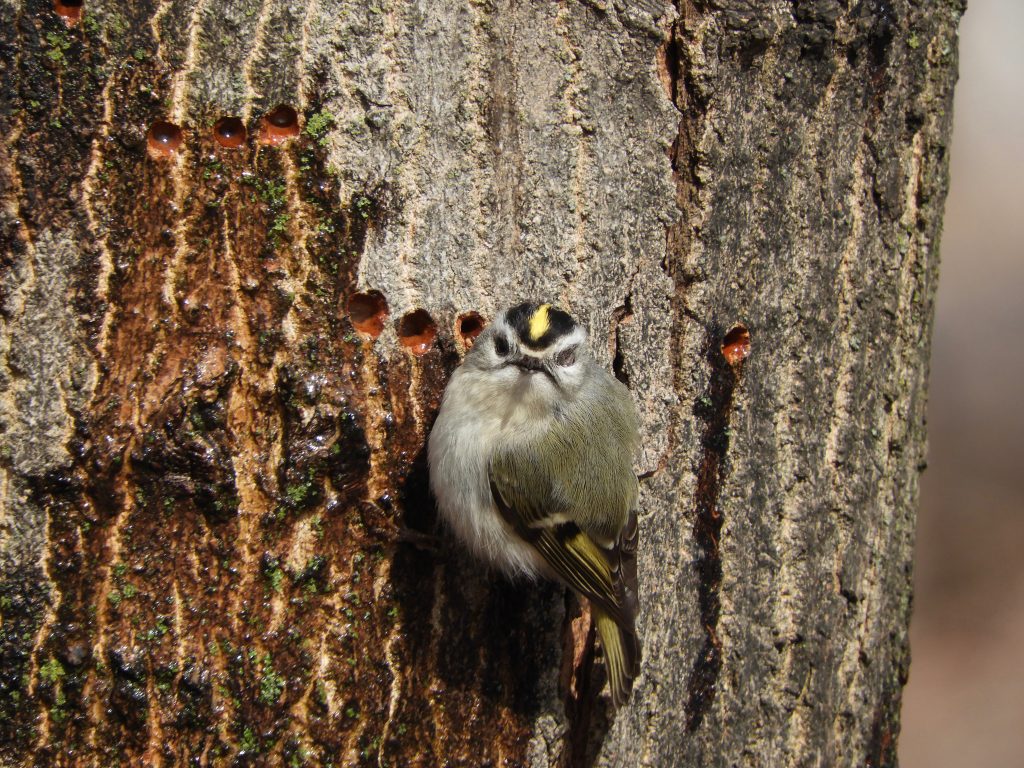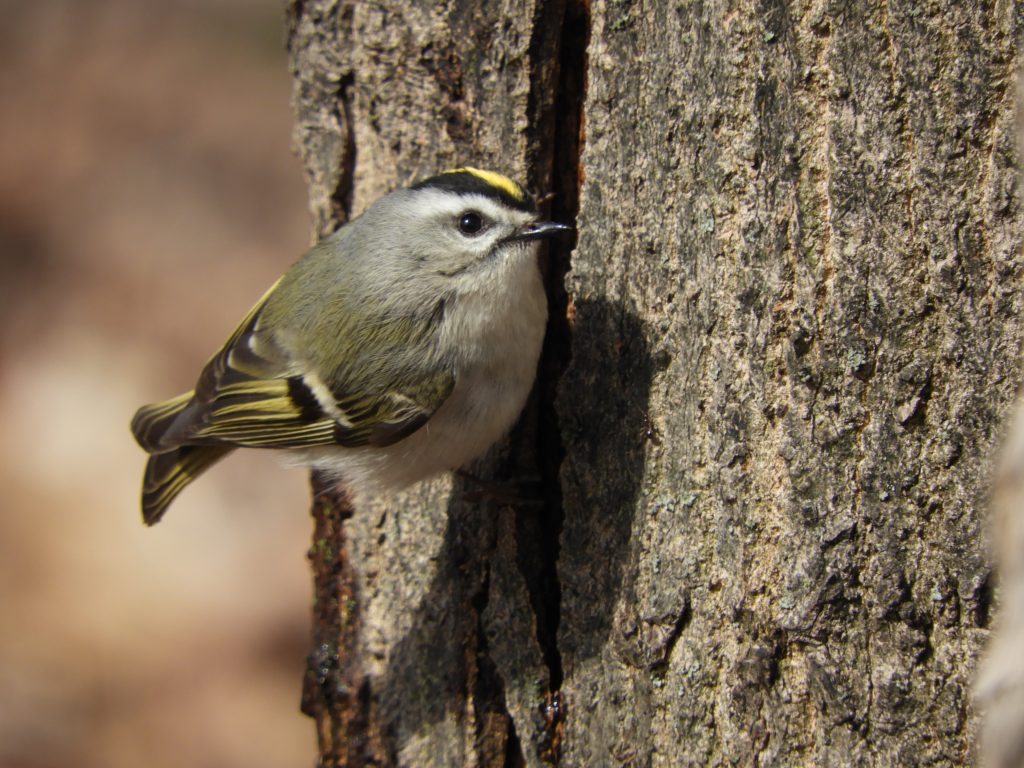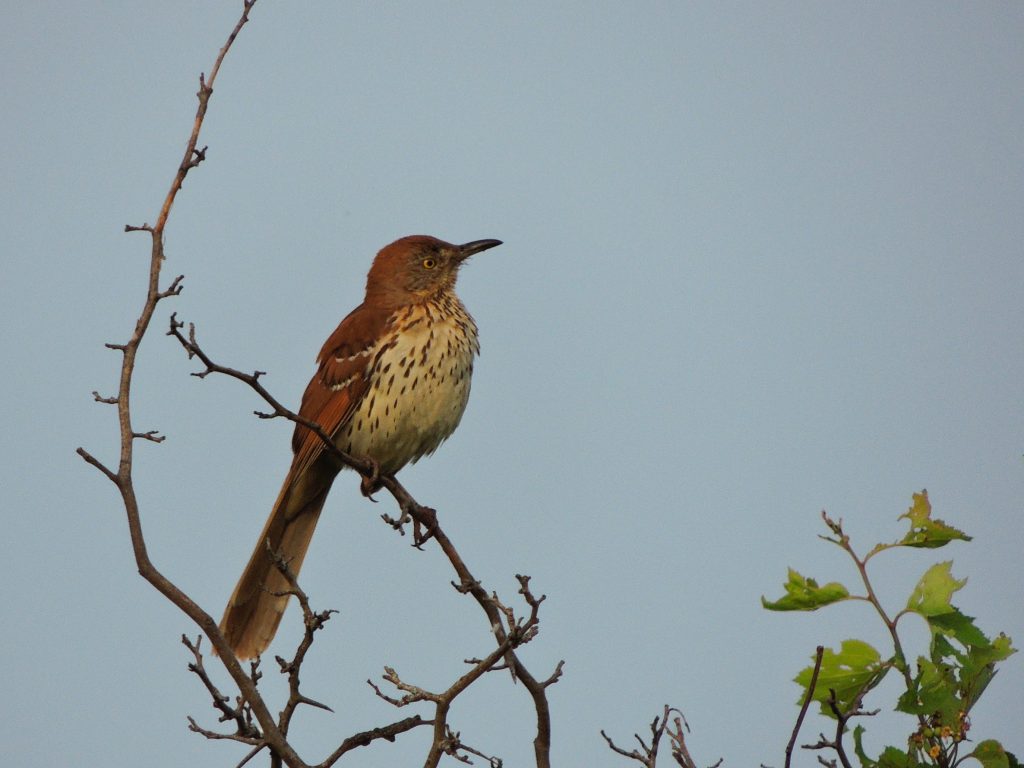April 12 2019. Shell Park Oakville, ON. Last night I checked the continental radar images for evidence of birds in migration; I’m glad I did, it was busy. The skies seemed to be loaded with birds and I wondered what it would mean for us in the morning. Well, early today I did an advance check of a park where I will be leading a Beginner Birding Hike and found Northern Flickers and Golden-crowned Kinglets had descended on us, they were everywhere. There was much more to it than flickers and kinglets but in terms of sheer numbers they dominated. Among many others, I got fleeting glimpses of a Hermit Thrush, a Winter Wren and a pair of Eastern Phoebes. It’s just possible the Hermit Thrush had overwintered here but I suspect all the others are returning migrants and it’s anyone’s guess how far they’ve come or how much further they have to go. So, the spring migration is well underway and I’m pleased to be in the thick of it.

I thought I had found My Birds of the Day when I came upon a small group of Golden-crowned Kinglets who had found a stream of sap running from fresh holes made by a Yellow-bellied Sapsucker; I’d never seen or heard of this behavior before. Kinglets rarely stay still but these had probably found a valuable source of sugar and paid little attention to me.

A later, surprise sighting and without question Bird of the Day, was a Brown Thrasher. My arrival to where it was scratching in the leaf litter for food startled it and it moved away quickly, disappearing into a patch of thick brambles. I was quite shocked to see it as it struck me as a very early date for a thrasher. With some research I found that it is only a bit early but not a record-breaker by any means. They usually start arriving in mid-late April and are in full flood by the end of the month.

Footnote. At first blush, it seems improbable that birds would show up on radar but they do, and in spring, when the quantity of migrating birds aloft is staggering, the masses show up clearly. Because radar stations are mostly associated with airports and therefore relatively few and far between, the bird-images show as circular blue patches within radar’s range. It all takes place at night when the surge of migration occurs. See for yourself by following this link some spring night, most nights before the mid-late May will be busy although nasty weather will slow or stop things.